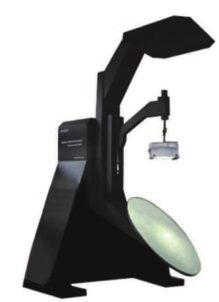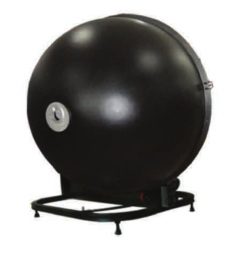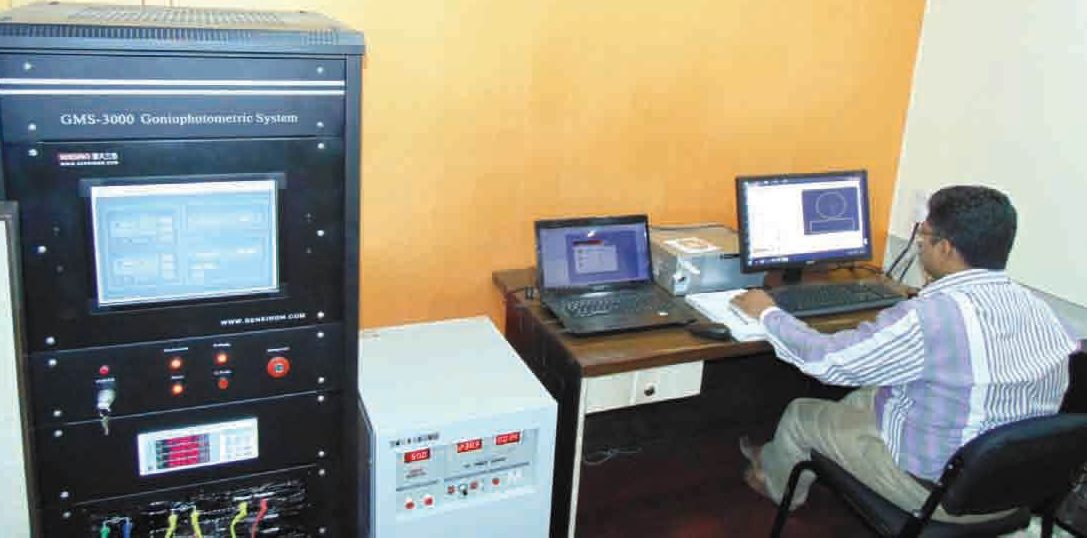LIGHTING TECHNOLOGY
PMEA professional management team allows to provide quality solutions and fulfils local as well as overseas customer requirements. We constantly stay abreast with latest manufacturing, tooling design and information in the market, low-cost automation and fool-proofing systems
PMEA has been Pioneer in Lighting Production, Supported by Latest Technology.
Photometric Testing Instruments
We at Photometry Laboratory has Goniophotometer Type C and Spectroradiometer. Only C Type Goniophotometers are approved under IES standards.
We can perform Photometric Testing globally :
Integrating Sphere / Type C Goniophotometry Evaluations to IESNA-LM79
Type C Goniophotometer – In the swinging mirror configuration, the light source is fixed in it’s intended position, and a large mirror on arm is rotated around the light source ,reflecting the output to the photo detector. Type C goniophotometers are required for LM-79 testing, because the light source is installed in the same way it will be installed in the field. This provides the most accurate readings, as the light source isn’t tilted, and thus the heat profile isn’t constantly changing throughout the measurement cycle.
Spectroradiometer – An Important aspect of Spectroradiometer is ‘Self Absorption Correction’ . This requires the use of an auxiliary lamp.
Self Absorption correction is important for testing luminaires in an spectroradiometer. This develops a correction factor to account for the difference in light absorption that occurs when the luminaire is tested inside the spectroradiometer.
Goniophotometer
In Goniophotometer, the tested luminaire rotates only around the fixed vertical axis in the prescribed burning position & a reflecting mirror rotates around the horizontal axis, meanwhile, the photometer rotates around the horizontal axis synchronously to pursuit the measuring beam. Combined with multi-probe, integrated measurement of luminously, chromatically.
Fully meet the requirements of CIE, EN, GB, LM international standards :
- CIE 121 The Photometry and Goniophotometry of Luminaires.
- CIE 70 The Measurement of Absolute Luminous Intensity Distributions.
- IESNA LM-79 IES Approved Method for the Electrical and Photomatric Measurements of Solid-State Lighting Products.
- EN 13032-1 light and lighting – Measurement and presentation of photometric data of lamps and luminaires.
- CIE 84 Measurement of luminous flux.
- CIE 102 Recommended file format for electronic transfer of luminaire photometric data.
- IESNA LM-75 Goniophotometer Types and Photometric Coordinates.
- IESNA LM-46 photometric testing of indoor luminaires using high intensity discharge or incandescent filament lamps.

Features
- Tested luminaires are fixed in stable burning situation.
- Measuring light incidence perpendicularly to the fixed photodetector.
- Excellent low stray light by installation if multi-baffles between tested luminaire and the photodetector.
- Light-trap plate moving synchronously with the mirror to eliminate the stray light of background reflection.
- Equipped with photodetector and colour detector, with meet the requirement of spatial non-uniformity of chromaticity in IES LM79-80.
Integrated Sphere
ISpectroradiometers are designed to analyze spectrum and colour performance for LEDs, luminaires and displays etc. They provide easy access to a number of test capabilities, including spectral power distribution (UV-VIS-IR), CIE chromaticity coordinates, correlated colour temperature, colour rendering index, colour purity colour difference and dominant wavelength, luminous flux, radiant power, photobiological irradiance / radiance and luminous efficacy, etc.



